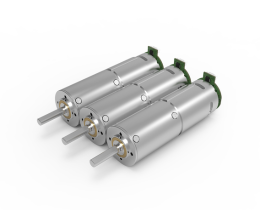Why Your Next Project Needs a DC Motor with Gearbox (and How to Pick the Right One)
Let’s talk about something that’s quietly powering the world: DC motors with gearboxes. You’ve probably seen them in action without even realizing it—maybe in automated factory lines, medical devices, or even that espresso machine you swear by. But what makes these little workhorses so irreplaceable? And why do some projects thrive while others stall?
.webp)
First off, let’s cut through the jargon. A DC motor with a gearbox isn’t just “a motor plus some gears.” It’s a precision partnership. The motor spins fast; the gearbox slows it down while cranking up torque. Think of it like a cyclist shifting gears uphill—less speed, more muscle. But here’s the kicker: Not all gear motors are built to handle the grind.
“Why does torque matter?” Imagine a conveyor belt hauling heavy packages. A high-torque motor keeps things moving smoothly, even under load. A weak one? It’ll stutter, overheat, or just quit. That’s where gear ratios come in. A 10:1 ratio means the motor spins 10 times for every single output rotation—translating to serious lifting power. But pick the wrong ratio, and you’re either wasting energy or straining the system.
At KPOWER, we’ve seen projects fail for the simplest reasons. One client tried retrofitting a cheap gearbox onto an existing motor for a solar tracker. It worked—for about a week. The gears wore down, alignment slipped, and the whole setup froze. Lesson? Compatibility isn’t optional. A motor and gearbox designed as a unified system last longer, run quieter, and handle surprises (like sudden load changes) without drama.
Q: Can’t I just use a regular motor?
A: Sure—if you don’t mind compromises. A standalone DC motor might hit 3,000 RPM, but without a gearbox, it’ll lack the “oomph” to handle real-world resistance. Adding a gearbox lets you dial in the exact speed and torque your application needs. It’s like tailoring a suit versus buying off-the-rack.
Durability’s another unsung hero. Sealed gearboxes shrug off dust, moisture, and temperature swings. Open designs? They’re budget-friendly but might gag in a dusty warehouse. One robotics startup learned this the hard way when their prototype’s gears jammed mid-demo. They switched to a sealed KPOWER unit, and suddenly their bot could handle outdoor terrain.
Here’s the thing: Innovation isn’t just about specs. It’s about how the tech adapts to messy, unpredictable environments. A DC motor with a gearbox isn’t a commodity—it’s a solution. Whether you’re automating a greenhouse or prototyping a drone, the right combo delivers reliability without babysitting.
So, what’s the takeaway? Don’t treat your motor and gearbox as separate puzzle pieces. Look for integrated designs, tested performance curves, and real-world feedback. Because in the end, the best gear motor isn’t the one with the flashiest specs—it’s the one you forget about. It just works.
KPOWER’s approach? Build like it’s going into our own projects. No magic, just meticulous engineering. Because when your motor outlasts the machine it’s powering, that’s not overkill—that’s smart design.


































.webp)

